Insufficient blood supply to the brain, what will it show? How to improve?
Hello everyone, I am an internist. Cerebral insufficiency of blood supply is more commonly known as a group of symptoms in clinical practice. The brain, as the center of our life, needs a constant supply of oxygen and glucose to feed the brain cells and tissues to function properly. But how can these things reach our brain, no doubt, need to be transported through the blood, and what is the meaning of insufficient blood supply to the brain? It means that the blood supply to the brain is insufficient for various reasons, thus causing the brain tissue and brain cells to be ischemic and hypoxic and a series of clinical symptoms, which I will analyze in detail below for you to listen.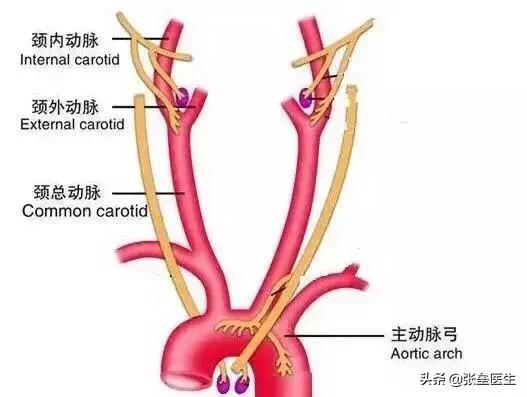
What are the abnormalities of cerebral hypoperfusion?
That is to say that when the cerebral blood supply is insufficient for various reasons, theThe brain becomes susceptible to lack of blood and oxygen.Brain cells lack of energy in the case of it will strike (similar to we do not have enough food to work without strength). People will feel dizzy, headache, the whole day down to feel dizzy, walking unsteady, hearing loss, some will have tinnitus (buzzing ears), memory is poor, sometimes sitting or squatting suddenly stand up people will be more dizzy.It is even possible for some people to experience blackouts and fainting and falling to the ground as a result.

What can cause insufficient blood supply to the brain?
● Atherosclerosis
①Please note that the blood supply to our brain comes from the arteries, and the human body can be divided into a total of two sets of systems that govern the brain blood. The internal carotid artery system and the vertebral-basilar artery system.Of these, the internal carotid artery system supplies the first 3/5 of our intracranial structureswhereasThe vertebrobasilar system supplies, on the other hand, the posterior 2/5 of the structures of the occipital lobe, brainstem, cerebellum, temporal lobe, and anterior spinal cord.
②Once everyone understands where the blood supply to the brain comes from let's look at what atherosclerosis has to offer.In layman's terms, this means that atherosclerosis reduces the elasticity of the arteries.. As time progresses, atheromatous plaques slowly appear, which in turn cause narrowing of blood vessels, increased blood viscosity, and microthrombosis. Let's think about this for a moment.Originally, the blood vessels supplying the brain were relatively thick, but now because of atherosclerosis the blood vessels have become narrower, so is the blood supply to the brain insufficient.
③You may want to ask, what about atherosclerosis? I'm here to tell you.It's actually the result of a variety of factorsThe endothelial system of the arteries of the human body can be damaged by high blood pressure, diabetes mellitus, hyperlipidemia, and smoking. The destruction of the arterial endothelial system is the root cause of atherosclerosis.So in the end, it's all about preventing and controlling blood pressure, blood sugar, blood lipids, quitting smoking, alcohol, obesity and other high-risk factors.
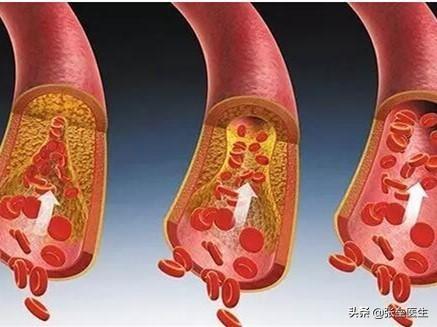
:: Cervical spine disorders
① Here comes the second system of arteries supplying blood to the brain, which I described above.i.e. vertebrobasilar systemThe blood supply to the brainstem, cerebellum, temporal lobes, anterior spinal cord and cranial nerves is mainly from the vertebral arteries. As I mentioned earlier, the blood supply to the brainstem, cerebellum, temporal lobe, anterior spinal cord, and cranial nerves comes mainly from the vertebral arteries. And anatomically, the vertebral artery branches from the supraclavicular artery and then travels up the transverse foramen of the cervical spine.This section is just protected by the transverse foramen, so it is not easily compressed.
②But please note that because the vertebral artery can only enter the intracranial segment through the foramen transversarium, things like circum-occipital tendon stenosis, circum-axial joint misalignment, and cervical disc prolapse can easily cause vertebral artery compression. The consequences of vertebral artery compression are self-evident, so the main causes of this type of cerebral blood supply deficiency areVertebral artery-type and sympathetic-type cervical spondylosis caused by crico-occipital tendon stenosis and cricoarytenoid joint subluxation.
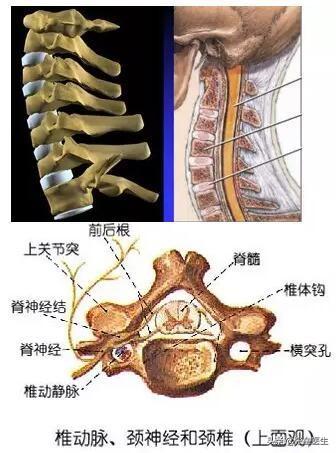
:: Other factors
Cerebral insufficiency of blood supply actually has a very wide range when it comes to talking about it, and due to space constraints, I am unable to list them all out for you.Here I can only take out the common ones and analyze them with you, like heart-related causes can also cause insufficient blood supply to the brain, and arterial blood to any of our body's organs comes from the heart pumping it out.So if there are causative factors that cause the heart's pumping to be compromised that can also indirectly lead to insufficient blood supply to the brain, such as heart failure, arrhythmia, and myocardial infarction.
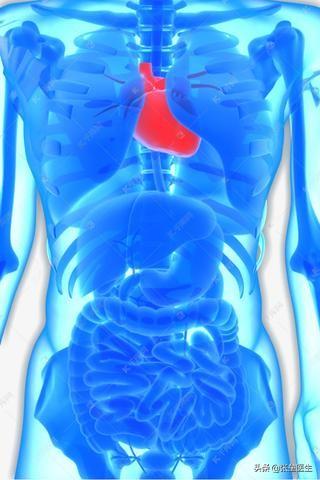
What tests can be done for cerebral hypoperfusion?
●Vascular ultrasound
Like the carotid artery, cranial vascular ultrasound can be done in general county hospitals, and there is no radiation, no trauma, and the cost is not expensive. When the ultrasound suggests that there are carotid blood vessels and intracranial cerebral blood vessels with blood flow slowing down, accelerating, stenosis and other vascular abnormalities, it is necessary to pay attention to further evaluation.So this is the most common test used in the clinic to determine cerebral insufficiency of blood supply.
● Cerebrovascular CTA
This is something that you may hear relatively little about, and we generally call it cerebral artery CT angiography.is one of the more common clinical ct imaging methods.A method of using a contrast agent injected into a blood vessel, causing it to be enhanced, and then reconstructing the blood vessels in the brain after a ct scan, can be effective in identifying any narrowing or occlusion in the brain. It's not just the blood vessels in the brain thatLike many patients with angina who are considering coronary artery stenosis, coronary artery CTA is also performed, and frankly, the purpose of this test is also to see whether it is caused by vascular factors.
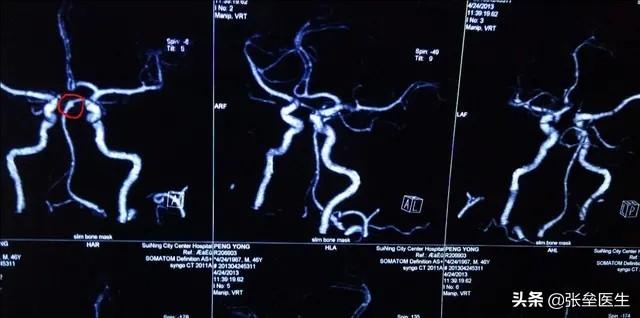
● Other inspections
①For example, magnetic resonance angiography, its main principle is to use the flow-space effect under magnetic resonance to image blood vessels. This can effectively determine whether the blood vessels are diseased or not, and whether the blood supply is insufficient or not.Comparatively speaking, this kind of shot is more advantageous than the CTA mentioned above
②There is also cerebral angiography, which is an invasive vascular test that is generally not preferred. It is based on an arterial approach to the branches and openings of the cerebral arteries, where a catheter is delivered to the cerebral arteries.This is a method of injecting a contrast medium to visualize the blood vessels under x-ray, so that it is clear whether the blood vessels have any stenosis, plaques, or malformations.
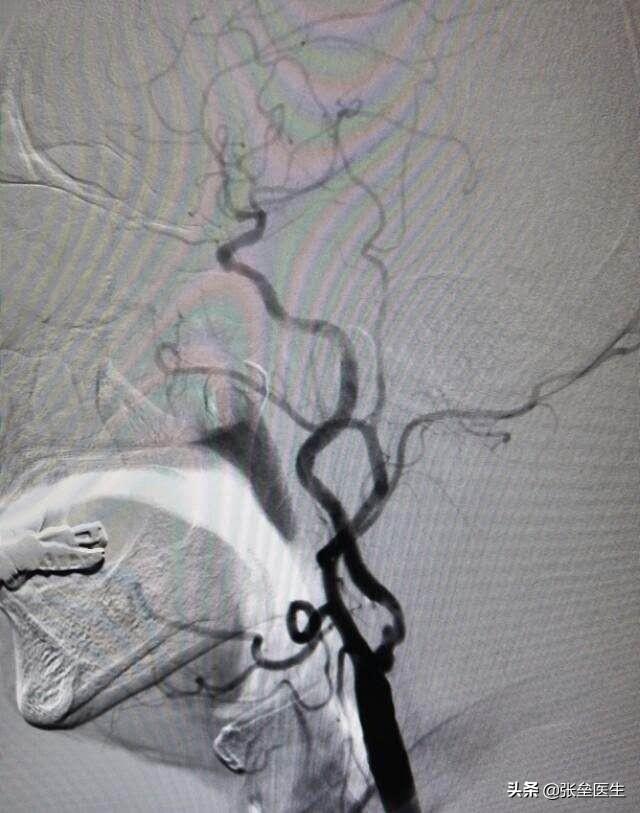
What can I do to improve my cerebral blood supply?
①In fact, to put it more realistically, I let a random old man on the street to do a blood vessel ultrasound will basically indicate atherosclerosis. Because people are like a machine, with age, the arterial wall hardness slowly increase as well as blood vessel elasticity slowly weakening is the way to go, there is not much good way.However, there is no need to worry too much, and it is not the case that everyone will develop a brain infarction.
②If there are high risk factors for atherosclerosis such as hypertension, diabetes, hyperlipidemia, obesity, etc., then statins can be used prophylactically after comprehensive evaluation.Usually pay attention to maintain a healthy lifestyle, quit smoking and alcohol, light diet, maintain nutritional dietary balance, appropriate exercise, emotional adjustment, maintain a happy mood.
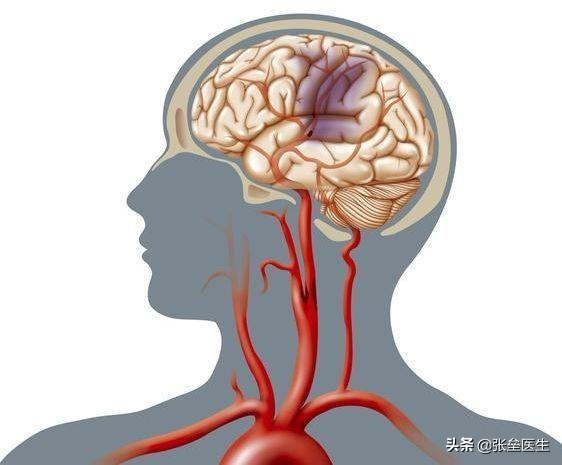
Author's Message:If you still have questions, welcome to leave a message, interaction, exchange in the comments section. It is not easy to code, purely manual completion, if it helps, welcome to like, retweet, collect. If you like my creative content.Feel free to follow me. Thank you for your patience in reading and we'll see you in the next installment.
52-year-old Ms. Qian, is a few days ago, a patient of my private letter, itself a little high blood pressure, has been taking medication to maintain, recently felt his upper arm numbness, and dizziness at the same time, but after a moment's rest, the symptoms are much better, but also do not take it for granted, its age, more or less a little bit of a problem, but after a period of time, found that their own symptoms are not reduced, but more and more But after a while, I found that my symptoms did not decrease, but became more and more frequent and intense.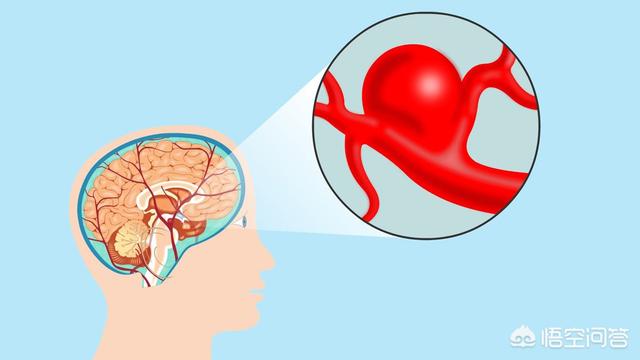
However, she was very puzzled, because Ms. Qian is no stranger to cerebral blood supply insufficiency, often with her grocery shopping with Sister Liu is also cerebral blood supply insufficiency, but the symptoms of the two are worlds apart, Sister Liu only body weakness, vision loss, not enough to sleep the symptoms, and did not have upper extremity numbness like her, after understanding the situation, I said to her:"First of all, not all diseases exist alone, in the clinic there are many patients suffering from many diseases at the same time, with cerebral insufficiency of blood supply, it is not without the possibility of other diseases at the same time; at present, we can be sure that the patient must exist in cerebral insufficiency of blood supply of the clinical reality, we need to pay attention to what causes the cerebral insufficiency of blood supply, it is very likely that this patient There are serious cervical spine lesions, making the carotid artery spasm and constriction, blood can not be normal flow, so will be diagnosed with cerebral blood supply insufficiency, and numbness of the limbs, although it may be induced by a variety of diseases, but there is a more subtle distinction, such as cerebral blood supply insufficiency is most likely to be associated with cerebral infarcts, this kind of patient's limb numbness is often a unilateral numbness of the upper and lower extremities, called hemiplegia; and the patient only has numbness of the upper extremities, then more should be suspected. Numbness abnormalities, then more should be suspected cervical spondylosis."
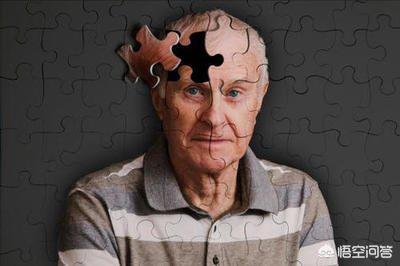
In the past, cerebral insufficiency of blood supply mostly occurred in the elderly, but now, cerebral insufficiency of blood supply is getting younger and younger, and many people refuse to believe that they have cerebral insufficiency of blood supply when they are checked out.
1. Dizziness, when the patient has arterial narrowing or aging, it will lead to insufficient blood supply , triggering dizziness.
2. Numbness occurs, when the arteries are suppressed, the blood flow will become relatively small, triggering insufficient blood supply to the brain, and numbness will occur, not only numbness of the limbs, but also numbness of the face, numbness of the tongue and other symptoms. But like I said above, attention to detail is needed.
3. Insufficient blood supply to the brain can cause problems with the motor function nerves, which can lead to slurred speech and a slurred mouth.
4. Nausea and vomiting. Insufficient blood supply to the brain causes symptoms of ischemia and hypoxia in the brain, and blood flow is relatively slowed down, resulting in nausea and vomiting.
5. Want to sleep, have bad spirits all day long, the whole person is lethargic.
6. Physical weakness, which can give rise to a noticeable sense of lethargy.
7. It can cause blurred vision and blurring of the eyes.
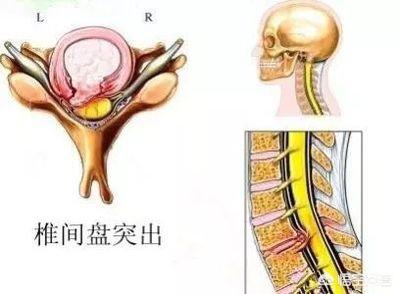
How to improve it needs to depend on the cause of the disease!
When we discuss the causes of insufficient cerebral blood supply, we need to consider some unavoidable causes, such as atherosclerosis due to advanced age and lipid deposition due to daily diet.
If the patient is suffering from insufficient cerebral blood supply due to cervical spondylosis, then we need to treat the cause of cervical spondylosis to release nerve excitability and restore blood circulation.
If the patient's cells in the brain region are already necrotic (cerebral infarction), then neuromodulation is also required to activate them.

I hope my answer helps you!
If there's anything you don't understand, comment and private message me!
Hello, I'm glad to answer your question. Insufficient blood supply to the brain, is very common and causes a lot of symptoms. Here I will tell you about the common symptoms and precautions of insufficient blood supply to the brain, as well as ways to regulate it.
Cerebral blood supply insufficiency, mainly seen in middle-aged and elderly people, the main symptoms are headache and dizziness, insomnia and dreaminess, and in serious cases, panic, chest tightness and shortness of breath, myocardial ischemia, cerebral infarction, and so on.
For this situation, middle-aged and elderly people are mainly accompanied by three highs, arteriosclerosis and other problems, so that the conditioning must be from the root of the conditioning, lowering blood lipids, lowering blood pressure, lowering blood glucose, activating blood circulation, improving microcirculation. Dietary attention, do not eat too much greasy and high-fat food, because the cerebral blood supply is insufficient, so we must pay attention to the posture, for example, when you get up in the morning, you must first slowly move the cervical vertebrae in bed, and then slowly get up, twisting the head or suddenly change the posture, you must be slow, can not be too strong, otherwise it is easy to lead to transient ischemia, the dizziness of the symptoms.
There is also a part of the young people, because of cervical spondylosis, can also cause insufficient blood supply to the brain, headache and dizziness and other symptoms. In fact, now a lot of young people have cervical spondylosis, and the serious ones will have a headache and dizziness conditioning words, because there is no old people's three highs, it is necessary to target the conditioning of cervical spine, in the good daily maintenance at the same time, to avoid prolonged low head, to avoid half-lying half-lying, to avoid pillow high pillows. Usually nothing can do cervical spine health exercises, you can also use gua sha board or comb comb through the back of the head and cervical spine.
As for conditioning the cervical spine, you can massage, gua sha, acupuncture, magnetic therapy and other methods of conditioning, improve the cervical spine muscle ligament strain stiffness, especially to improve the back of the head of the compression problem, usually conditioning up the effect is still relatively fast, better.
Cerebral blood supply insufficiency, although not a particularly serious disease, but if it continues, it will cause other chronic diseases, and even serious heart disease and cerebrovascular disease, so it is still necessary to pay attention to it.
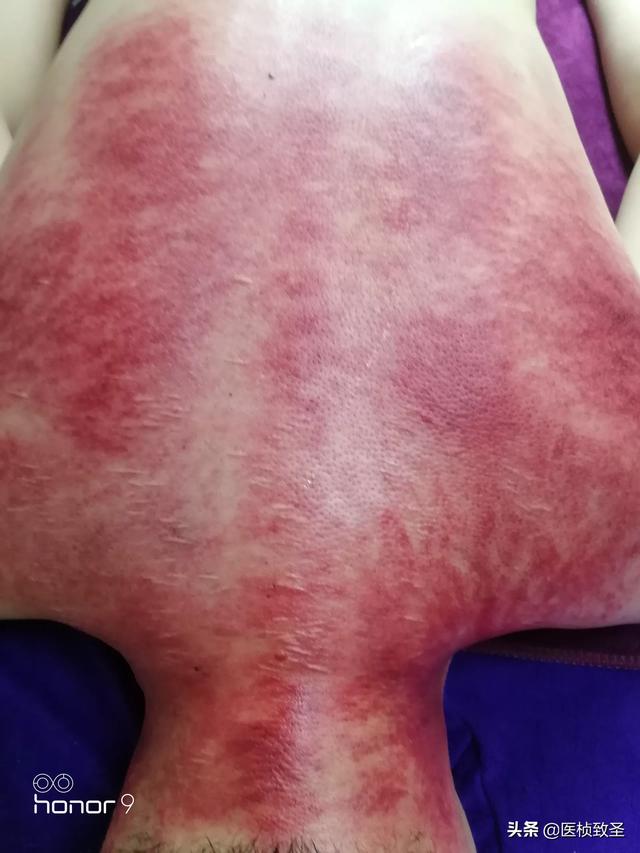
Generally speaking, cerebral blood supply insufficiency, 1. most of them have a history of hypertension, hyperlipidemia, diabetes mellitus. 2. in the early stage, there are headache, head swelling, tinnitus, memory loss, mood fluctuations, sleep disorders, and in its progressive stage, there are neuropsychiatric symptoms and signs. 3. there are changes of arteriosclerosis in the fundus of the eye on funduscopic examination. 4. auxiliary examinations help to diagnose.
Arranging a regular life, the most effective way to avoid insomnia, is to make life regular, and develop the habit of going to bed and getting up regularly, so as to establish their own physiological clock.
There are many symptoms of insufficient blood supply to the brain, such as dizziness, numbness of the limbs, blurred eyes and foggy eyes. The specific how to cause cerebral blood supply insufficiency should go to the hospital to check to be sure.2018 I have had a dizzy spell, the sky is dizzy, can't walk, can't stand, can't sleep. I went to the hospital and found out that the cervical spine lesion caused my dizziness. The doctor gave me a suggested program of medication. Because it was too hard to bear, I found a famous doctor to do a small surgery similar to a small needle knife on my cervical vertebrae, and then gave me some anti-inflammatory medicine, and two days later the symptoms of dizziness disappeared. The doctor told me that in the future, I should try to catch less colds, sleep, sit and walk in the right way, and usually develop good working hours and living habits. It has been more than three years now, and the symptoms of insufficient blood supply in my brain rarely recur. No matter what kind of symptoms triggered by insufficient blood supply in the brain, go to the hospital for examination, believe in science, trust the doctor! Treat the symptoms.

Cerebral blood supply insufficiency is a phenomenon of brain dysfunction caused by cerebral ischemia and hypoxia, which is commonly seen in cerebral vascular sclerosis, cerebral stenosis, low blood pressure, cervical disc herniation compression of vertebral arteries and so on, and with the increase of age, the higher the incidence, and the more serious the clinical symptoms are. Hypertension, hyperlipidemia, hyperglycemia, coronary heart disease is a common cause of cerebral blood supply insufficiency, because of the long incubation period of this disease, all kinds of people show different clinical symptoms, then cerebral blood supply insufficiency occurs when there will be those abnormal symptoms?
Common Symptoms I: Dizziness and confusion
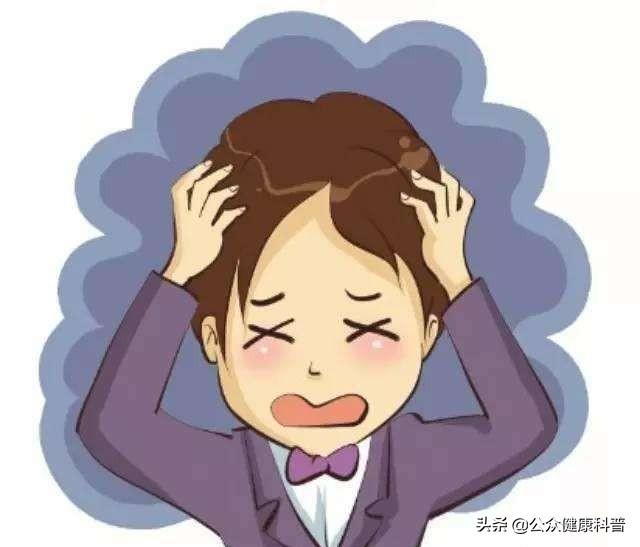
Dizziness is the most common symptom of cerebral blood supply insufficiency, most of the patients' dizziness is mainly vertigo, unsteadiness, accompanied by dizziness, unconsciousness, like wearing a helmet, most of them have paroxysmal episodes with intermittent periods, and a small number of them are persistent, which are often neglected because of the symptoms are not serious or paroxysmal episodes.
Common Symptoms II:Headache
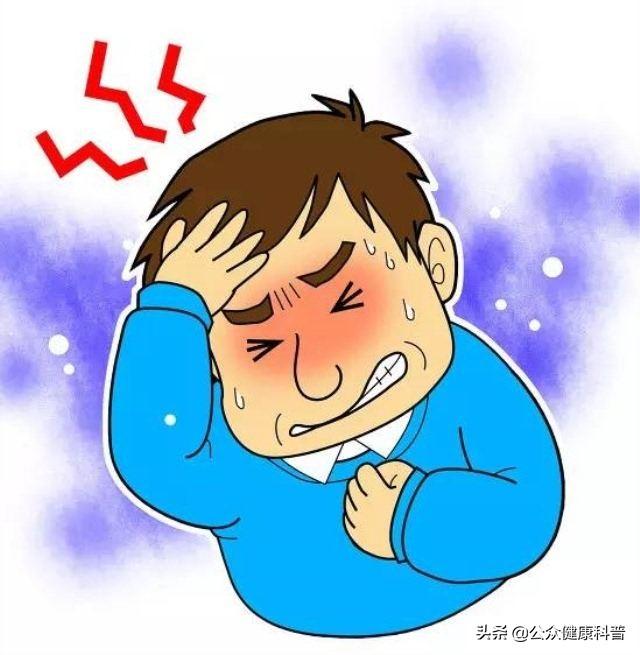
This symptom is more common, some people will feel the head ooh and ah pain a few times, some people feel the head boring pain boring pain, the pain site is not certain, some older people will also be sleeping for a sudden feeling of head pain and wake up, wake up headache symptoms relieved, this headache is often cerebral arteriosclerosis, the blood in the circulation of blood vessels in blood vessels can not be diastolic and lead to vasospasm caused by.
Common Symptoms 3:Crooked corners of the mouth, slurred speech, slurred speech
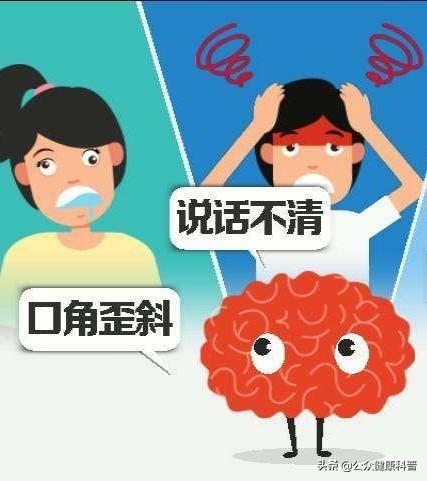
This condition often occurs suddenly, the tongue to one side, the tongue is not flexible, resulting in unclear pronunciation, there will be food residue in the teeth and cheeks when eating, drooling, choking on drinking water, some people have a seizure for a while will be relieved, and some people continue to have unrelieved symptoms, which means that a cerebral infarction or cerebral hemorrhage has occurred, you need to go to the hospital in time to consult a doctor.
Common Symptom 4: Numbness and hemiplegia of the limbs
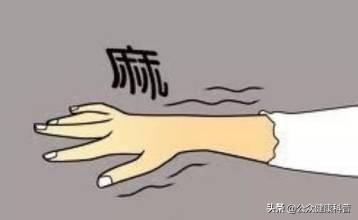
Sometimes feel numb hands and feet numb, walking is not strong, easy to one side of the skew, the hand can not hold things can not hold steady or even can not hold, serious lying in bed can not get up, if it is a paroxysmal attack, you should be grateful that your blood vessels have not occurred substantial blockage, timely symptomatic treatment will have a very good effect, if the symptoms continue to be unrelieved, this is a bad dish, this is a hint of acute cerebral infarction, it must be rushed to the The hospital to seize the time to thrombolytic therapy.
Common Symptom 5: Blurred Vision

These patients are often the internal carotid artery system has a problem, there is an ocular branch of the vascular circulation obstruction caused by some patients due to stasis of blood vessels in the fundus of the eye and blindness symptoms, the need to see a doctor in time Oh!
The above five symptoms are the most common clinical symptoms of cerebral blood supply insufficiency, then found that cerebral blood supply insufficiency how to improve it?
First of all, the diet should be low-salt and low-fat diet, diabetic need to control blood sugar, try not to eat fatty meat, fried food, you can eat more green vegetables, fruits and so on (if high blood sugar can choose low-sugar fruits such as dragon fruits, vegetable melon, etc.).
Secondly:Life as little as possible to drink alcohol, the smoking crowd to quit smoking in time, overweight to diet to lose weight, to regular work and rest, do not stay up late.
Third: more outdoor exercise, walking and jogging, etc., choose more suitable for their own exercise, daily exercise at least half an hour above the best.
Fourth:To control the underlying diseases, such as high blood pressure, high blood fat, high blood sugar, etc. whether to meet the standard, such as do not meet the standard as soon as possible to find a doctor to regulate the control of the underlying diseases, some of the symptoms will naturally disappear.
Fifth:Seek medication, you can take some medication to activate blood circulation and remove blood stasis, dredge blood vessels, generally can achieve better results.
Symptoms of cerebral insufficiency of blood supply, we say what are the usual symptoms of patients with cerebral insufficiency of blood supply.
Generally speaking the abnormal manifestations of these patients often have these aspects, first of all, the abnormal mental state: for example, all day drowsiness, always want to sleep, which is caused by insufficient cerebral blood supply and is regarded as a precursor symptom.
The second is a failure of motor nerve function: this is often characterized by drooling, aphasia or slurred speech, difficulty swallowing, weakness or immobility of one limb, unsteady walking or sudden falls. These are often aura symptoms and are of short duration.
The third is the dysfunction of sensory function: such as patients may feel numbness of the face, tongue, lip numbness; some of the vision is not clear, or even a sudden momentary blindness; many people have a sudden feeling of dizziness; there are suddenly tinnitus, hearing loss and so on.
The cause of cerebral blood supply insufficiency has a great relationship with cerebral arteriosclerosis. Patients with cerebral blood supply insufficiency should firstly strengthen physical exercise. Exercise is an effective way to enhance blood circulation of the whole body and improve blood supply insufficiency of the brain, such as walking, jogging, playing tai chi and so on. Then eat less greasy and spicy food, the diet should be light, you can eat more food rich in vitamins as well as fiber. Secondly, Chinese medicine can be used in the treatment of Chinese medicine, Chinese medicine according to the different conditions of patients identified as kidney deficiency, blood stasis, phlegm-dampness and other types of evidence, and the use of different Chinese medicines to regulate, can receive satisfactory results. If the cerebral blood supply insufficiency has not been improved for a long time, then it should go to the hospital for treatment in time.
faint with blurred vision (idiom); dizzy and eyes dimmed
This question and answer are from the site users, does not represent the position of the site, such as infringement, please contact the administrator to delete.